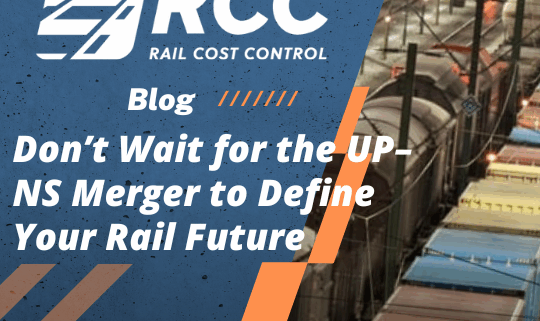Don’t Wait for the UP–NS Merger to Define Your Rail Future
Why Every Rail Shipper Needs a Formal Position on the UP–NS Merger
As the rail industry braces for potential structural shifts driven by the proposed Union Pacific (UP) and Norfolk Southern (NS) merger, rail shippers face a defining moment. Whether the merger proceeds as proposed or undergoes regulatory revisions, the decisions made today will reshape rate structures, routing options, and competitive access for years to come.
For shippers, neutrality isn’t a strategy — it’s a missed opportunity. Establishing a formal position on the UP–NS merger is essential to protect both short- and long-term transportation interests.
1. Defining Your Interests Before Others Define Them for You
In every major railroad consolidation, stakeholders that clearly communicate their needs early tend to shape the outcome in their favor. Railroads and regulators look closely at shipper feedback when assessing market impacts, competition, and network efficiency.
By formally stating your position — whether in support, opposition, or with conditions — your company ensures that its voice is heard in the Surface Transportation Board’s (STB) review process. Silence can be interpreted as acceptance, and that leaves your transportation costs and access at the mercy of others’ priorities.
2. Anticipating How the Merger Could Affect Your Network
The UP–NS merger could influence more than rate structures. It may reshape interchange points, alter routing options, and redefine how traffic flows across regions. For shippers with multiple facilities or diverse commodity portfolios, even subtle shifts in routing control can lead to significant changes in cost and service reliability.
Developing a formal position forces a proactive analysis:
– How could network consolidation impact your lanes and service options?
– Would your access to competing carriers be limited or enhanced?
– Could rate or service commitments already negotiated become less competitive post-merger?
3. Strengthening Your Negotiating Leverage
Railroads are closely watching how shippers respond. A well-documented position gives your organization a clear and credible foundation for future negotiations, with carriers. This can also affect what is included in the final merger agreement, if approved by the STB.
Taking a stand communicates preparedness and sophistication that you’ve assessed how the merger could influence your network and that you’re ready to advocate for terms that maintain or improve your competitive access.
4. Building Alignment Across Stakeholders
Establishing a formal stance isn’t only about submitting comments to the STB; it’s also about aligning your internal stakeholders — from logistics and procurement to legal and executive leadership.
A defined position ensures that everyone within your organization is speaking consistently and strategically when the merger becomes a discussion point with rail partners or industry groups.
5. Protecting Future Options
Even if the merger is approved, its implementation will unfold over the years. Railroads often use transition periods to make operational adjustments that can affect pricing and service. Shippers with a clear, documented stance are better positioned to request concessions, monitor compliance, and hold carriers accountable to merger conditions that protect competition.
The Bottom Line
The UP–NS merger will likely be one of the most consequential developments in rail logistics this decade. Shippers that take the time to analyze its implications and establish a formal position — supported by data and a clear understanding of how the merger affects their network — will be better prepared to adapt, negotiate, and thrive in the new landscape.
In mergers of this scale, those who speak early have the ability and opportunity to strategically shape the outcome. Those who remain silent are left to navigate the consequences of inaction.
Take the Next Step
Understanding how the UP–NS merger could reshape your competitive access is critical — especially if your lanes or facilities may face increased captivity. Escalation Consultants can help you evaluate how the merger will impact your specific commodities, rates, and routing options.


